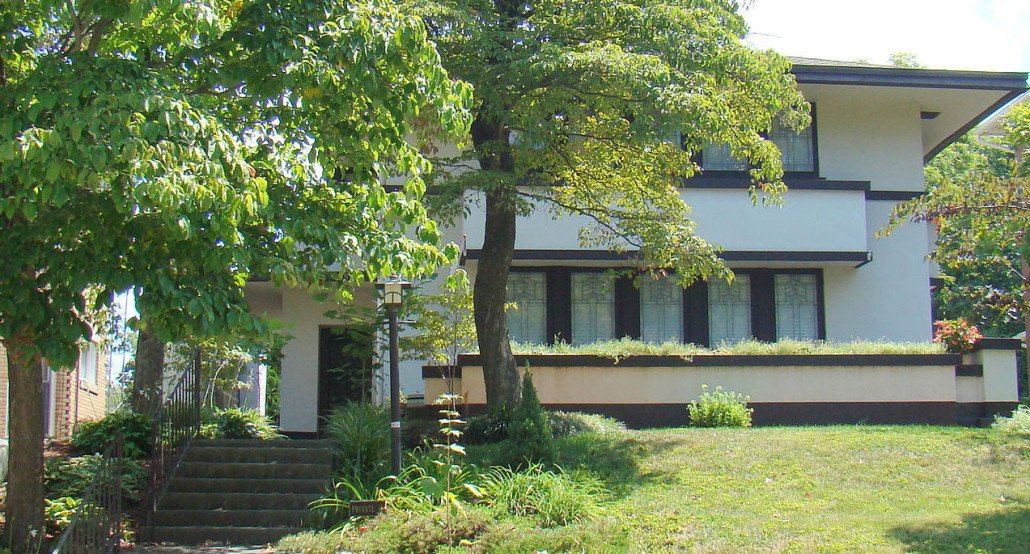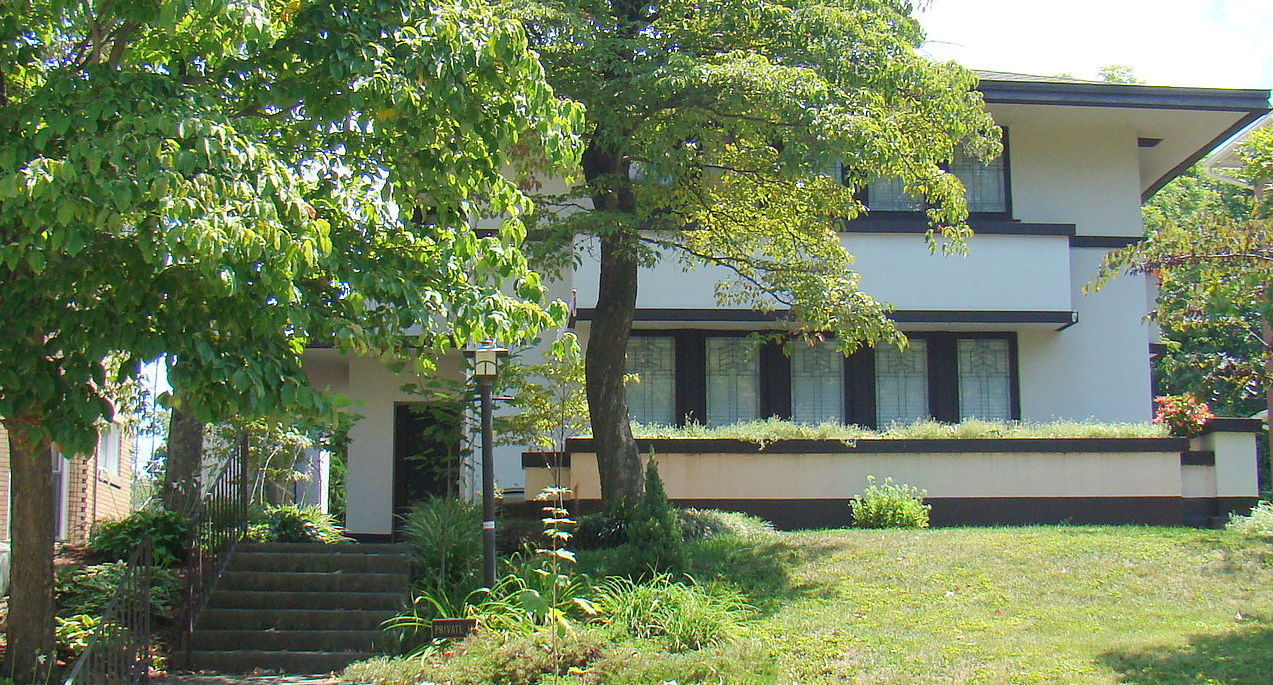
LOUISVILLE, Ky. (AP) – Famed architect Frank Lloyd Wright took a taxi from a luncheon in his honor at the Pendennis Club to visit the Jefferson County Courthouse at Sixth and Jefferson streets during a trip to Louisville in May 1948 to speak at the University of Louisville.
At first he said if the building were associated with politics, “I won’t like it,” according to a front-page Courier-Journal story. “Politicians don’t hire good architects. They never hired me.”
When he asked who the architect was and was told it was (Kentucky-born) Gideon Shryock, Wright responded, “Never heard of him.” Finally, though, he paused to admire the Greek-revival structure, calling it a “noble old edifice,” the story said. He added: “We shouldn’t build this type building anymore, but we should keep those we have left.”
Wright was known for being a “curmudgeon,” said William Scott, a Lexington architectural historian and Wright expert. “He never had anything nice to say about any other architects.”
For the record, Shryock (b. Lexington 1802, died in Louisville 1880), was considered Kentucky’s first native-born, professionally trained architect. His projects included Morrison Hall at Transylvania University, Franklin County Courthouse in Frankfort and Chestnut Street Christian Methodist Episcopal Church, later known as Brown Memorial CME, in Louisville.
Scott will talk about Wright’s influence on Kentucky during a presentation titled Frank Lloyd Wright in Kentucky at 6 p.m. April 19, at the Kaden Tower, formerly known as the Lincoln Income Life Insurance Building, 6100 Dutchmans Lane.
It was designed through Taliesin Associated Architects, the firm Wright founded in Scottsdale, Arizona, to carry on his vision after his death at age 91 in 1959. The lecture is presented by the Central Kentucky Chapter of the American Institute of Architects.
Scott, who has a degree in architectural history from the University of Kentucky, is editor of A History of the Profession of Architecture in Kentucky among other publications and is secretary of the Taliesin Fellowship Alumni organization. He also is a caretaker for Wright archival materials. General public admission is $10.
Wright was born in 1867 in Wisconsin and was known for his “organic,” distinctly American style, called the Prairie School of architecture, and for hundreds of iconic buildings. They included the famous Fallingwater residence in Pennsylvania and the Guggenheim Museum in New York. He was in Louisville in 1948 to give a lecture, arranged through the Allen R. Hite Art Institute, at the U of L Belknap Playhouse on South Third Street.
Only one built project in Kentucky is directly linked to Wright – the Zeigler House in Frankfort near the Capitol – but his influence extended well beyond that through the work of his proteges and Taliesin Architects, Louisville architect Steve Wiser says. The Zeigler House, built in about 1910 for the Rev. Jesse Zeigler and now used as a weekend house, has been on a Frankfort Public Art Tour and is known for its art glass windows and direct access to the outdoors.
Wright designed two other homes that were to be in Louisville that were never built, Scott said. One from the early 1900s was for a huge triple lot with a view of Cherokee Park above Cherokee Road along Longest Avenue.
It was for the prominent W.W. Davies and Lydia Avery Davies family, but the husband, an attorney, became “tired of all the rigamarole” associated with planning the house and bought the nearby house at Longest and Ray Avenue – which became the home for the U of L president, he said.
Another designed for a schoolteacher named Jesse Franklin was to be on Chenoweth Run Road in the Jeffersontown area. But Wright was a “marked man” in those days, after running off with his mistress, Scott said. Thorpe Interiors, 224 Chenoweth Lane in the St. Matthews area, was designed by the Taliesin firm.
Olgivanna “Olga” Lloyd Wright, Wright’s Yugoslavian-born third wife, also was in Louisville in March 1966 for a prededication tour of the Lincoln Tower (below), whose chief architect was William Wesley Peters, her son-in-law, a Courier-Journal story said. “Wes” Peters, who was from Evansville, Ind., became CEO of the Frank Lloyd Wright Foundation and a close friend of Scott’s, Scott said.

Olga Wright, who met Wright in Chicago, toured the lacy, high-rise office building, which is next to the Watterson Expressway, exclaiming how beautiful a space was that was to become a restaurant and talking of “undulation and spaciousness.” Today, Ruth’s Chris Steakhouse offers a view from the 16th floor.
___
By MARTHA ELSON, The Courier-Journal
Information from: The Courier-Journal, http://www.courier-journal.com
Copyright 2016 Associated Press. All rights reserved. This material may not be published, broadcast, rewritten, or redistributed.
AP-WF-04-09-16 1649GMT


